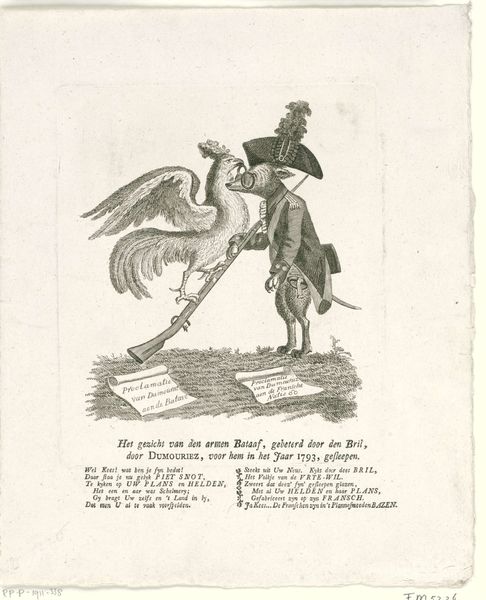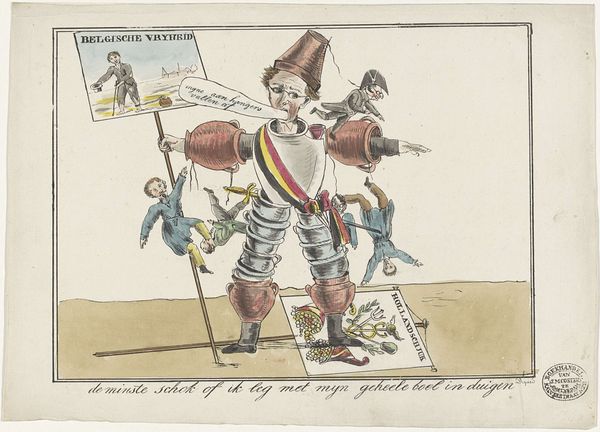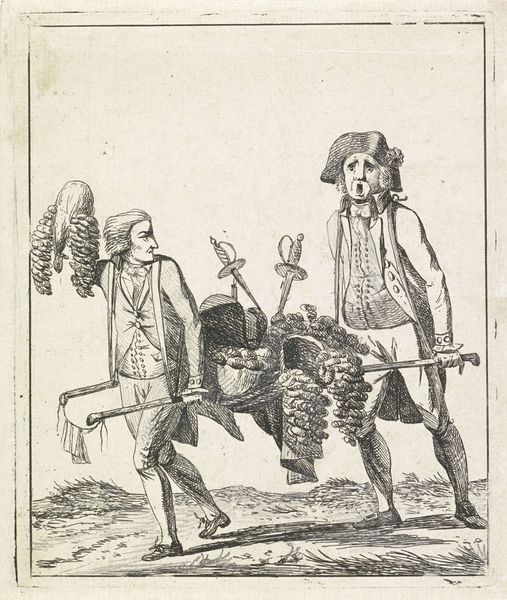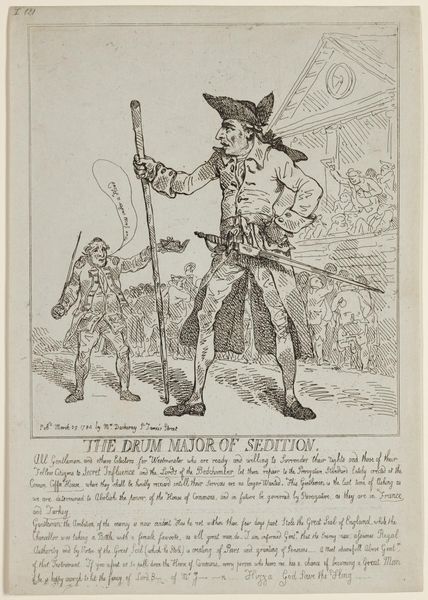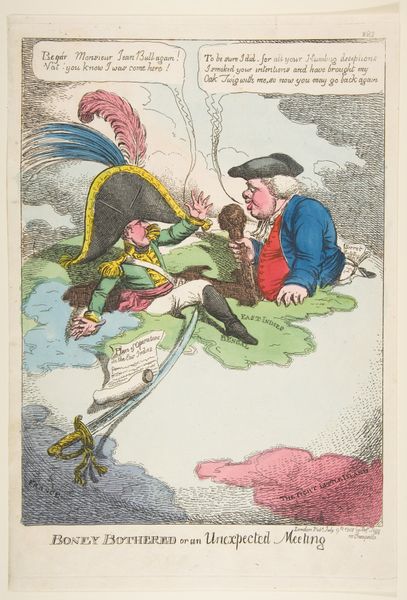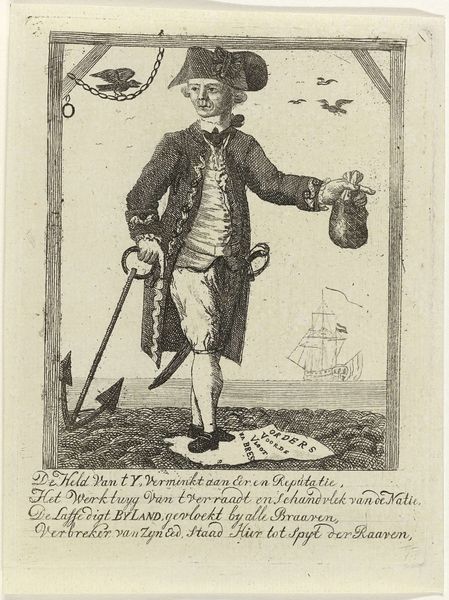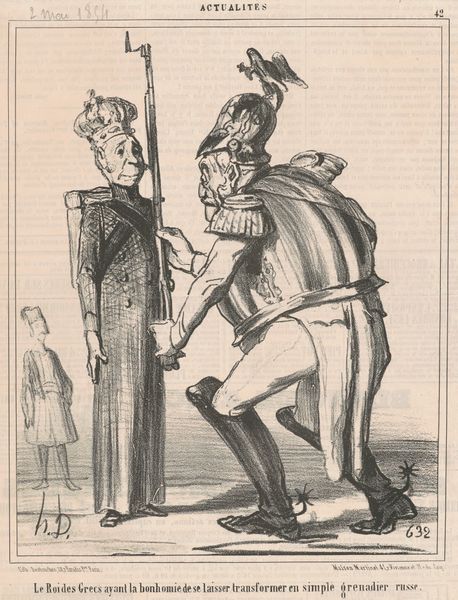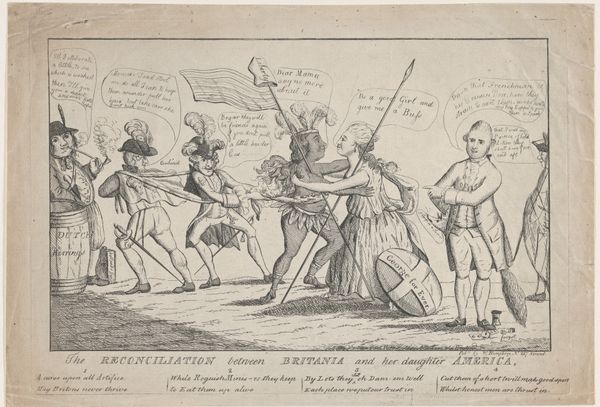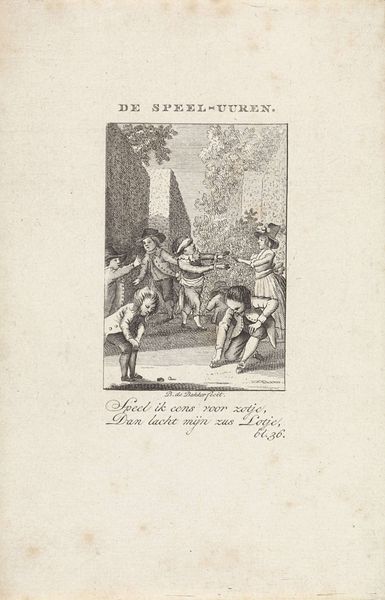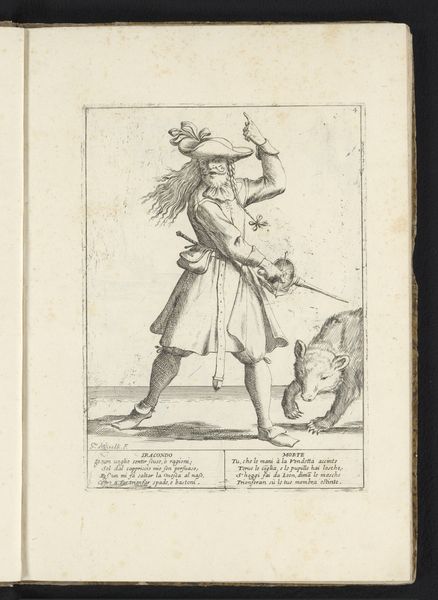
print, etching, engraving
#
narrative-art
# print
#
etching
#
caricature
#
old engraving style
#
history-painting
#
engraving
Dimensions: height 219 mm, width 154 mm
Copyright: Rijks Museum: Open Domain
Curator: Here we have an engraving, likely made between 1787 and 1793, called "De bedotte Kees," held at the Rijksmuseum. Editor: The detail is extraordinary! It looks almost satirical. There's an odd pairing of a rooster adorned with fleurs-de-lis and a figure, perhaps a wolf or fox, in military attire wearing spectacles. It’s an…interesting composition. Curator: It’s dripping with political commentary. You're right to notice the French symbols. This work functions as caricature and historical record simultaneously. Editor: A potent blend. The choice of animals... the rooster, symbolising France, juxtaposed with the other figure… Is it supposed to represent someone specific? Curator: Absolutely. This is a biting representation of Charles of Hesse-Kassel, referred to satirically here as “Kees.” The print alludes to the political turmoil within the Dutch Republic at the time. The rooster, laden with fleurs-de-lis, is clearly aligned with French interests. Editor: So, it’s a depiction of perceived foreign influence. And the spectacles? Are they symbolic as well? Curator: Precisely. The spectacles suggest a distorted view, perhaps an inability or unwillingness to see the true state of affairs, deliberately skewed for personal or political advantage. Dumouriez is explicitly referenced in the etching's inscription and insinuates how appearances and manipulative designs betray the ‘poor Bataaf,’ to enrich or benefit him, referring back to Charles. Editor: The artist effectively uses caricature to convey a sharp, cynical point of view regarding political machinations. And the artistic skills of the anonymous artist using this print form amplifies it’s public distribution which ultimately would have shaped public opinion in real time. Curator: Precisely! By analyzing this image as a material and cultural object, we have unearthed many socio-political narratives. Editor: Agreed; seeing beyond the aesthetic reveals deeper political intrigues and sheds light on late 18th-century Dutch society.
Comments
No comments
Be the first to comment and join the conversation on the ultimate creative platform.
